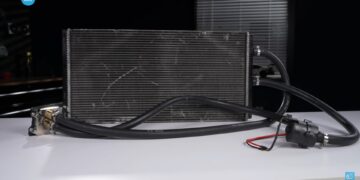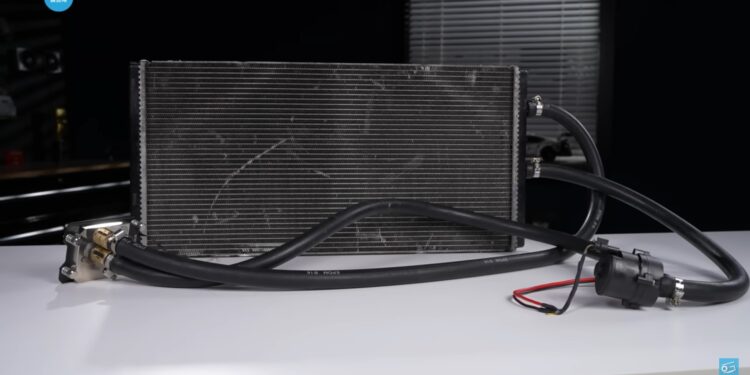Login to Continue Learning
Car radiators, such as those found in BMW M4s, offer significantly larger surface areas and more powerful pumps compared to typical AIO coolers. For instance, a 600mm radiator provides about five times the cooling surface area of a standard 360mm AIO. Geekerwan used his BMW M4’s radiator, known for its excellent performance.
The M4 radiator features a pump capable of achieving a flow rate of around 1200 liters per hour—nearly ten times that of high-end 360mm AIOs. To effectively cool such a large radiator, gigantic fans were necessary. Hence, Techlander utilized Toyota Highlander’s 300mm fans, rated at 100W, to ensure ample airflow.
This setup resulted in impressive performance: all 96 cores of the Threadripper PRO 9995WX reached 4.9 GHz, yielding a score of 187,153 points in Cinebench R23. However, this achievement falls short of the world record set using liquid nitrogen cooling, which achieved a clock speed of 5.8 GHz.
The power consumption with the M4 radiator setup was significantly higher than with the liquid nitrogen method—over 2000W versus around 1000W with LN cooling. While the automotive AIO system did not challenge the liquid nitrogen in terms of cooling efficiency, it was still a fun experiment and not an ideal solution for high-core-count processors.
For optimal cooling and performance with 96-core Threadripper processors, liquid nitrogen remains the best option, though it is not suitable for everyone.
📚 Reading Comprehension Quiz
What is the primary advantage of using a BMW M4 radiator in this setup compared to typical AIO coolers?
Please login or register to take the quiz and earn points!



















